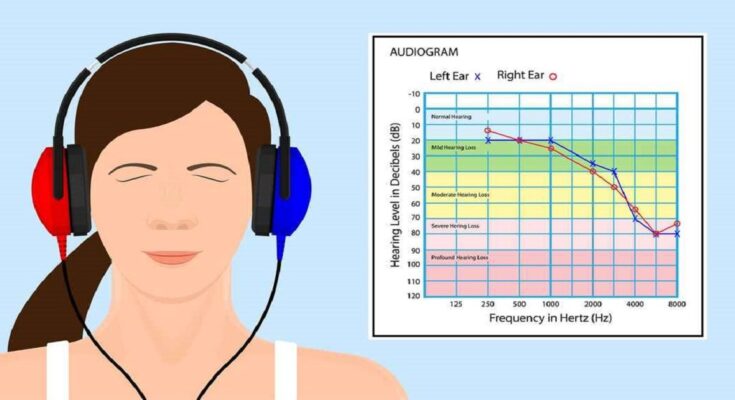Check-ups play a crucial role in assessing and diagnosing hearing-related issues. They are conducted by audiologists, who are specially trained professionals in the field of audiology. If you’ve ever wondered what an audiometry test entails or why it is necessary, this article will provide you with all the essential information you need to know. To find the nearest testing center do a Google search using the keyword audiometry test near me.
Understanding Hearing Tests
The Purpose of the Check-up
Hearing tests evaluate an individual’s ability to hear sounds of different frequencies and intensities. They help in identifying any hearing loss or impairment and determining the type and degree of the condition. They are essential in formulating appropriate treatment plans and determining the effectiveness of interventions.
Types of Tests
Pure Tone Audiometry Test: It measures an individual’s ability to hear pure tones at varying frequencies. The results are plotted on an audiogram, which provides a visual representation of their listening thresholds.
Speech audiometry Test: It assesses an individual’s ability to hear and understand speech. It involves the presentation of recorded or live speech stimuli at different volumes and background noise levels.
Tympanometry Test: It examines the eardrum’s movement in response to changes in air pressure. It helps in assessing the condition of the middle ear and identifying issues such as eustachian tube dysfunction or middle ear fluid.
Otoacoustic Emissions Test: It measures the sounds made by the inner ear as a response to a stimulus. It is commonly used to assess the function of the cochlea and is particularly useful in screening newborns and infants.
The Procedure
During a check-up, the individual is seated in a soundproof booth or room to eliminate external noise interference. The audiologist uses specialized equipment, such as headphones or inserted earphones, to deliver sound stimuli. The individual is instructed to respond by pressing a button when they hear a sound.
The test typically involves the presentation of tones at different frequencies and intensities. The audiologist gradually increases or decreases the volume of the tones to determine the softest level at which the individual can hear them. The results are recorded on an audiogram, representing the individual’s hearing thresholds for each ear.
The Importance of Check-ups
Early Detection of Hearing Loss: By identifying the loss early on, appropriate interventions can be initiated to prevent further deterioration and mitigate the impact on an individual’s quality of life.
Treatment Planning: Testing provides vital information for formulating personalized treatment plans. They help determine whether hearing aids, cochlear implants, or other assistive devices are necessary and what settings or adjustments are required.
Monitoring Progress: Regular check-ups are essential for monitoring the effectiveness of interventions. They allow audiologists to assess the progress made and modify the treatment plan.
Occupational Health: In certain industries, regular tests are mandated to ensure the safety and well-being of employees exposed to loud noises. They help identify noise-induced hearing loss and take preventive measures.
Read Also: What Kidney Conditions Can a Kidney Function Test Detect?
The audiometry test is fundamental in the field of audiology, aiding in the diagnosis, treatment, and monitoring of hearing-related issues. Individuals can take proactive steps to preserve their hearing health by understanding the purpose and procedure. Whether it’s regular check-ups, seeking appropriate interventions, or protecting oneself from excessive noise exposure, being aware of hearing check-ups empowers individuals to prioritize their well-being. Early detection and timely intervention are crucial to maintaining good hearing health throughout life.




